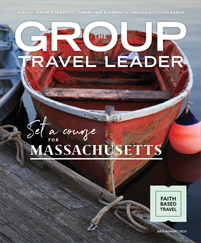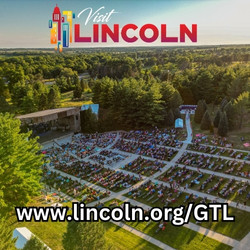
Scratch the surface of any major city in the Heartland and you will find distinctive, historic, ethnic, even funky neighborhoods that define the soul of the city.
Walk tree-lined streets flanked by stately Victorian mansions, shop in trendy boutiques or antique stores, sip coffee at neat sidewalk cafes while people watching, dine on ethnic delicacies at fine restaurants or grab a snack at a street food vendor.
“People who visit Chicago want to see neighborhoods,” said Patricia Sullivan, who runs a neighborhood tours program for the city of Chicago.
Here is a quick look at some neighborhoods worth exploring in a major city in each of the eight Heartland states.
Indianapolis
“Two neighborhoods in Indianapolis that are historic and present interesting opportunities for visitors to explore are Lockerbie Square and Broad Ripple,” said Chris Gahl, director of communications for the Indianapolis Convention and Visitors Association.
“Located right downtown, Lockerbie is a neighborhood rich with history. Indianapolis’ oldest surviving neighborhood, it was Indianapolis’ first historic district placed on the National Register of Historic Places. It was famous in the late 19th and early 20th centuries as the home of Hoosier poet James Whitcomb Riley. They offer great walking tours.”
The tours showcase an eclectic mix of Italianate, Federal and Queen Anne houses standing side by side among quaint cottages in the shadow of downtown.
“Running alongside the neighborhood is Massachusetts Avenue, a diagonal street lined with boutiques, galleries, cafes, theaters, etc.,” said Gahl. “One jewel is a small farm-to-table restaurant with only 17 tables called R Bistro. The chef sources locally, including a garden that literally sits next to the restaurant. The chef leads the city’s slow-cook movement.”
About 20 minutes north of downtown, Broad Ripple, which dates from 1836, has a mix of bars and clubs, art galleries, restaurants and funky shops.
The Broad Ripple Art Fair has been held in May since 1971, and gallery tours are held on the second Friday of May and September.
“This is the neighborhood David Letterman grew up in,” said Gahl.
www.discovermassave.com
www.discoverbroadripplevillage.com
www.lockerbiesquare.org
Chicago
Chicago has 77 distinctive community names that were created in the 1920s representing more than 130 different neighborhoods.
“On the north side, Devon Avenue is a cultural melting pot,” said Joleen Domaracki, assistant director of tourism sales and operations for the Chicago Convention and Tourism Bureau. “It is Indian, Pakistani and Orthodox Jewish. It is an interesting little neighborhood.”
A walk along Devon Avenue features nonstop Indian and Pakistani businesses: restaurants, groceries, sari shops, music shops, bookstores, butcher shops and jewelers. You can inhale the aroma of curry and other spices in the groceries and sample regional favorites in the restaurants.
“Pilsen and Little Village is mostly a Mexican area with great Mexican food and shops and the National Museum of Mexican Art,” said Domaracki.
“There are lots of cafes and little shops and art galleries,” said Emily Long, marketing and public relations director for the Chicago Office of Tourism.
These include authentic dulcerías (sweet shops) and panaderías (bakeries), and the local churches have bold murals and mosaics. The National Museum of Mexican Art, the nation’s largest Latino museum, contains art from pre-Columbian carvings and pottery to Mexico’s leading contemporary artists.
In addition to the art galleries and churches, murals of all shapes, sizes and qualities are everywhere along the streets.
A tiled, terra-cotta gateway with “bienvenidos” welcomes visitors to Little Village, where Mexican food abounds in supermarkets, taquerias and street carts.
Ukrainian Village, home of the Ukrainian National Museum, has Ukrainian churches and ethnic retail businesses.
“Ukrainian Village and Wicker Park are next to each other,” said Domaracki. “Wicker Park was settled mostly by Germans and has great architecture. It has great trendy boutiques and bars and is a big shopping destination we promote.”
www.explorechicago.org
www.choosechicago.com
Des Moines
“Historic Sherman Hill, just north of downtown, has gone through a renaissance,” said Tiffany Tauscheck, vice president of marketing for the Greater Des Moines Convention and Visitors Bureau. “It has homes from late 19th century and also little eateries, coffee shops and bars. It is a very pleasant community.”
Des Moines’ oldest neighborhood, Sherman Hill is an eclectic mix of Victorian, Queen Anne, Italianate, Flemish, Foursquare and Stick style houses that are being renovated by young families.
The neighborhood is home to two historic attractions: Hoyt Sherman Place and the Wallace House Museum. Hoyt Sherman Place, which has marble fireplaces, parquet floors and a carved mahogany entryway, was built in 1877 by a prominent local businessman of the same name. It was expanded over the years and now has an art gallery and a historic 1,400-seat theater that was built in 1923.
Tauscheck said a neighborhood that is great for fall drives is the Owl’s Head area South of Grand. “It traditionally has been known as one of the more exclusive areas,” she said. “It is where the governor’s mansion is.
“Owl’s Head has large homes that have been renovated. Some of the streets still have cobblestones. It is hilly with large old trees. It is great to take a drive through when the trees are turning and throughout the holiday season with all the lights.”
Detroit
“Hamtramck is a city within a city,” said Jennifer Petrous, tour and travel manager for the Metro Detroit Convention and Visitors Bureau. “It very much has a Polish heritage.
“The Polish Arts Center is a great place for groups to stop. Everything available in the store is imported from Poland. It’s a little bit of Poland right there.”
Petrous said groups can also get a hands-on experience at the center, from painting eggs to learning some of the Polish language. It also provides neighborhood bakery tours and restaurant experiences “where representatives tell about what you are eating.”
“In the 1980s, Detroit was one of the few communities Pope John Paul II visited while in the United States because of his Polish heritage,” said Petrous. “He said Mass there in a strip-mall parking lot.”
Another Detroit suburb with a strong ethnic heritage is Dearborn. “It is very entrenched with Middle Eastern culture,” said Petrous. “The National Arab American Museum is there, along with many food options. You can have an authentic Middle Eastern meal.”
Minneapolis
“For a long time, Uptown was considered eclectic,” said Kristen Montag, marketing communications manager for Meet Minneapolis. “More recently, it is evolving into higher-end shopping. Shopping is huge here. There are lots of boutiques and lots of restaurants and bars and clubs with rooftop decks.
“It is a fun neighborhood with lots of things going on. It is close to the lakes area, and people flock to it in the summer.
“The area is probably best known for the annual Uptown Art Fair, a juried art fair that’s the second-best-attended fair in Minnesota after the state fair and the eighth-largest arts fair in the nation,” said Montag.
The Uptown Theater, originally built in 1913 and rebuilt after a fire, shows art films and midnight shows on Saturdays. “It has art-deco architecture and a recognizable sign that stands out in the area,” said Montag.
The neighborhood’s eateries include Pracna on Main, the oldest restaurant on the oldest street in Minneapolis, which has been around since 1890.
Montag said Northeast Minneapolis, directly across the Mississippi River from downtown, “is more of an up-and-coming area. It always has been artistic and bohemian, but recently has developed unique restaurants and quite a few boutiques right along the river. It is becoming a bit more upscale with the newer businesses and buildings.”
Also known as Nordeast, the area has ornate Eastern European-influenced churches and large grain silos and mills. The neighborhood also has many art galleries and artist lofts, many of which are open to the public each May during the Art-a-Whirl open house.
www.minneapolis.org
Columbus
German Village, a former 19th-century working-class neighborhood in southern Columbus, has become a national model for restoration and preservation.
“German Village has great charm, with cobblestone streets, and all the houses in the area have gas-lit lamps outside,” said Scott Peacock, media relations manager for Experience Columbus. “All are beautifully well-kept.”
The houses range from small brick cottages with slate roofs and distinctive chimney pots — long clay extensions that improve the draft — to large Italianate and Queen Anne houses.
“There is a great mix of restaurants and neat little retail shops. It’s a great place to have good food and then walk around and find retailers. There are a lot of artists and independent shops. It is very walkable.”
Groups can arrange for tours, which begin with a 12-minute video at the German Village Meeting Haus.
Short North, an arts and entertainment area just north of the heart of downtown near the arena district, has become one of the most recognized areas in Columbus. It has a concentration of artists, retailers and restaurants.
“You won’t find a chain in Short North,” said Peacock. “There are great art galleries and boutiques, all anchored along High Street. You know you are in Short North when you look up and see the lighted arches over High Street.
“It’s great for people watching, with its hustle and bustle. During the First Friday gallery hops, everyone just floods in and walks up and down the streets. There is live music on the sidewalks. It’s a fun way to spend Friday night.”
St. Louis
“Lafayette Square is an old French neighborhood that has been revitalized,” said Donna Andrews, director of public relations for the St. Louis Convention and Visitors Commission. “It has lots of Victorian homes known as ‘painted ladies.’”
The stately houses from the 1870s and 1880s surround 30-acre Lafayette Park, which was built in 1836 as the first public park west of the Mississippi River.
“People can go around the park and see the painted ladies. They offer home tours during Christmas,” said Andrews. There also is an annual House and Garden Tour and a Victorian Art Festival in June.
Located just south of downtown, less than five minutes from the Gateway Arch, Lafayette Square is a hotbed of redevelopment with new condominiums and townhouses sprinkled among the historic houses.
The Central West End on the eastern edge of Forest Park is a great place to shop or people watch with its sidewalk cafes, pubs, bookstores, galleries and antique stores nestled in among giant mansions.
Many of the mansions are located along tree-lined, limited-access streets known as private places. Also located in the neighborhood is the boyhood apartment of playwright Tennessee Williams, which is said to be the setting of his play “The Glass Menagerie.”
The Cathedral Basilica of St. Louis, which has one of the world’s largest collections of mosaic art, is an anchor of the neighborhood.
Events include the Taste of the Central West End food festival in June, a Greek festival on Labor Day weekend and Halloween festivities in October.
For more America’s heartland:
History thrives
Cuisine that makes it good to be hungry
Agritourism’s harvest
Conner Prairie
Elkhart County’s Amish haystack
Agritourism on the cusp of suburbia
Tasting the Old World











